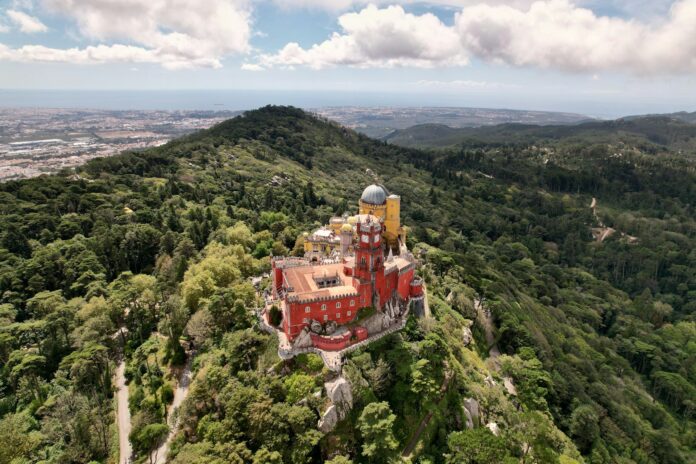Moving house sits somewhere between root canal treatment and doing your tax returns on the list of life’s most enjoyable activities. One day you’re living in a perfectly normal home, the next you’re surrounded by towers of boxes and wondering how you accumulated enough stuff to fill a small department store.
There’s always that moment of standing in the middle of your house, looking at everything you own, and thinking “Maybe I could just leave it all behind and start fresh?” But unless you’re planning a dramatic lifestyle change involving nothing but a backpack and a one-way ticket to Bali, you’ll need to pack it all up somehow.
The good news? With a bit of planning and the right approach, packing doesn’t have to reduce you to sitting on the kitchen floor at midnight, surrounded by half-packed boxes and questioning every life decision that led to this moment. The trick is to tackle it room by room, maintaining some semblance of order in the chaos. Here’s how to pack up your entire house without losing your mind, your favourite mug, or your will to live.
Start In The Kitchen
The kitchen is always the trickiest room to pack, so it’s best to get it out of the way first. Start by sorting through your cupboards – those fancy kitchen gadgets seemed like a good idea at the time, but if that spiralizer has been gathering dust since 2019, it might be time to find it a new home.
When it comes to packing dishes, here’s a game-changing tip: pack plates vertically, like records in a box, rather than stacked flat. They’re much less likely to break this way because they can’t bear the weight of everything above them. If you’re worried about your best china or family heirlooms, it’s worth getting proper packing materials from a packing company. For everyday dishes, wrap each piece in newspaper and cushion with tea towels – they need packing anyway, so they might as well be useful.


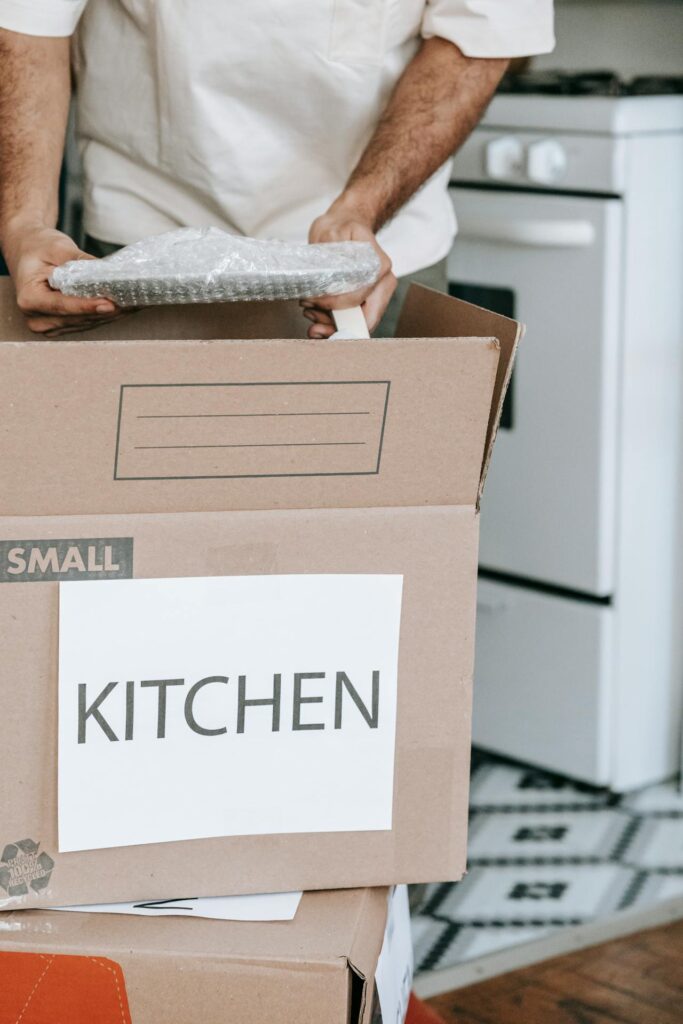

The kitchen requires serious organisation. Start with things you rarely use, like the fancy serving platters and special occasion glasses. Be sure wrap anything fragile in bubble wrap. Pack heavy items like pots and pans in small boxes – a box full of cookware quickly becomes impossible to lift. Keep your everyday cooking items until last, and when you do pack them, put them in a clearly marked box.
Your first-night box should include: a kettle, mugs, teabags, coffee, sugar, a few plates, bowls, cutlery sets, a sharp knife, chopping board, washing up liquid, tea towel, kitchen roll, bin bags, and a corkscrew (trust us on this one). Add any essential cooking items if you’re planning to make meals right away – a frying pan and wooden spoon can be invaluable.
Tackling The Living Room
The living room is deceptive – it might look straightforward, but it’s amazing how much stuff accumulates in there. Start with books, but remember they get heavy quickly. Use small boxes and mix in lighter items like cushions or throws to balance the weight. Sort books as you go – there’s no point moving the ones you’ll never read again.
Electronics require methodical packing. Before unplugging anything, take detailed photos of how everything’s connected – both close-ups of the connections and wider shots of the overall setup. Label every cable (masking tape works well), and keep all components from one device together. Put screws and brackets in labelled sandwich bags and tape them to their corresponding items.


Pack your DVDs, games, and consoles next, but keep back some entertainment for the final days. Photos and artwork are last – they keep the place feeling homely while you’re packing. When you do pack frames, wrap them individually and pack them vertically, just like plates. Mark these boxes as fragile and store them upright.
Sorting The Bedroom
Bedrooms are all about smart wardrobe decisions. Start by sorting everything into categories: definitely keep, maybe, and donate. Try everything in the ‘maybe’ pile – if it doesn’t fit or you haven’t worn it in a year, it’s probably time to let it go.
For the clothes you’re keeping, pack according to season and necessity. Box up off-season items first, then occasional wear. Keep a week’s worth of everyday clothes accessible. Rolling clothes really does work better than folding for most items – they take up less space and crease less. The exception is structured items like suits and formal dresses, which need proper hanging.
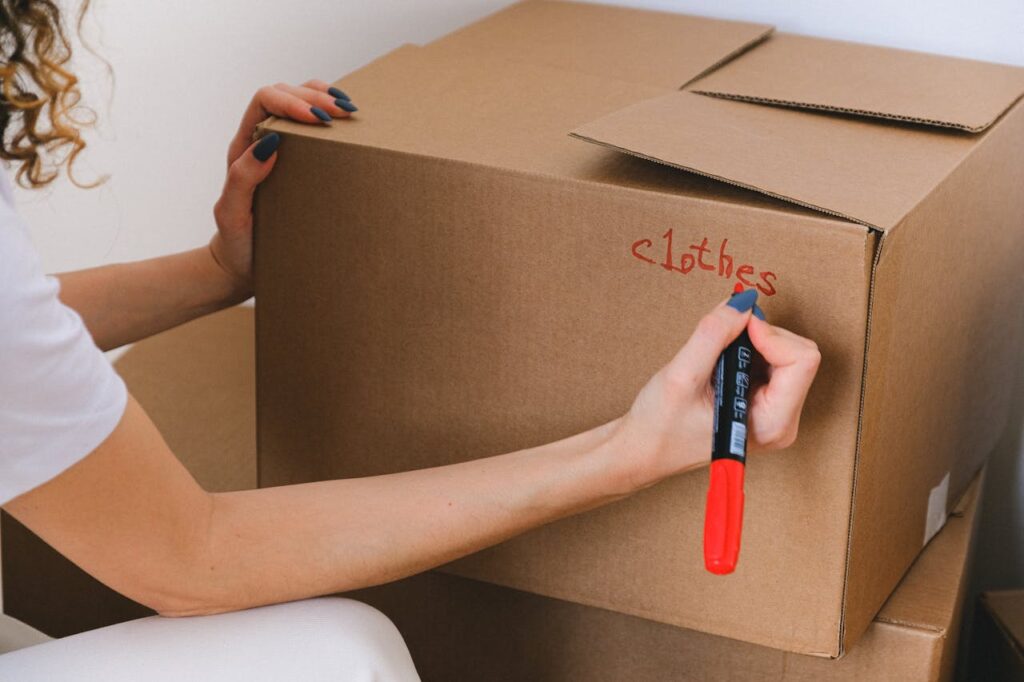
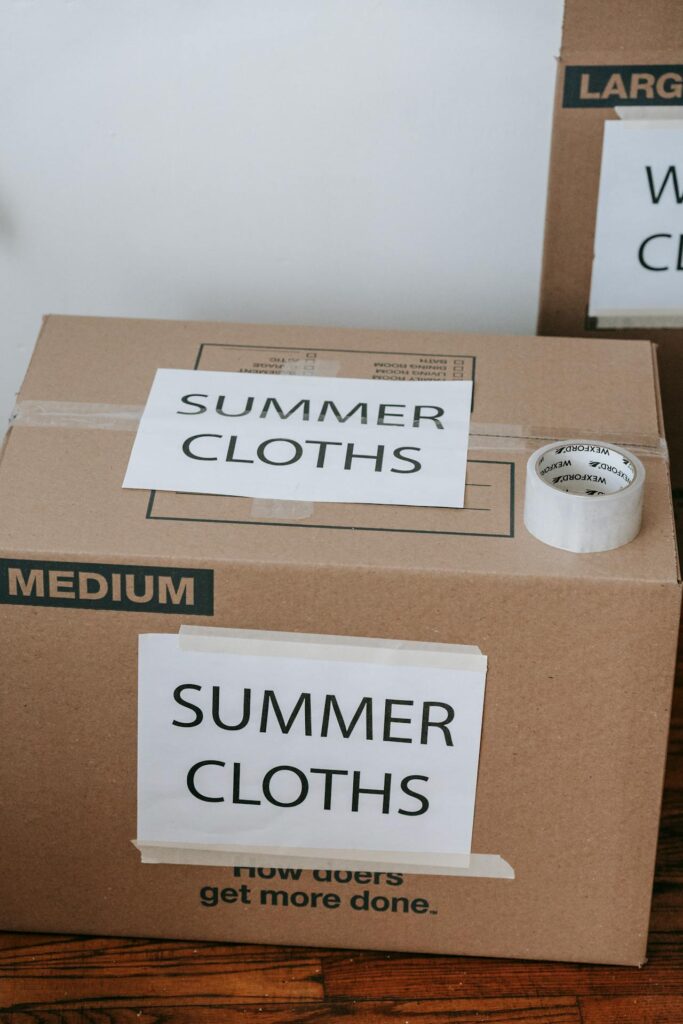

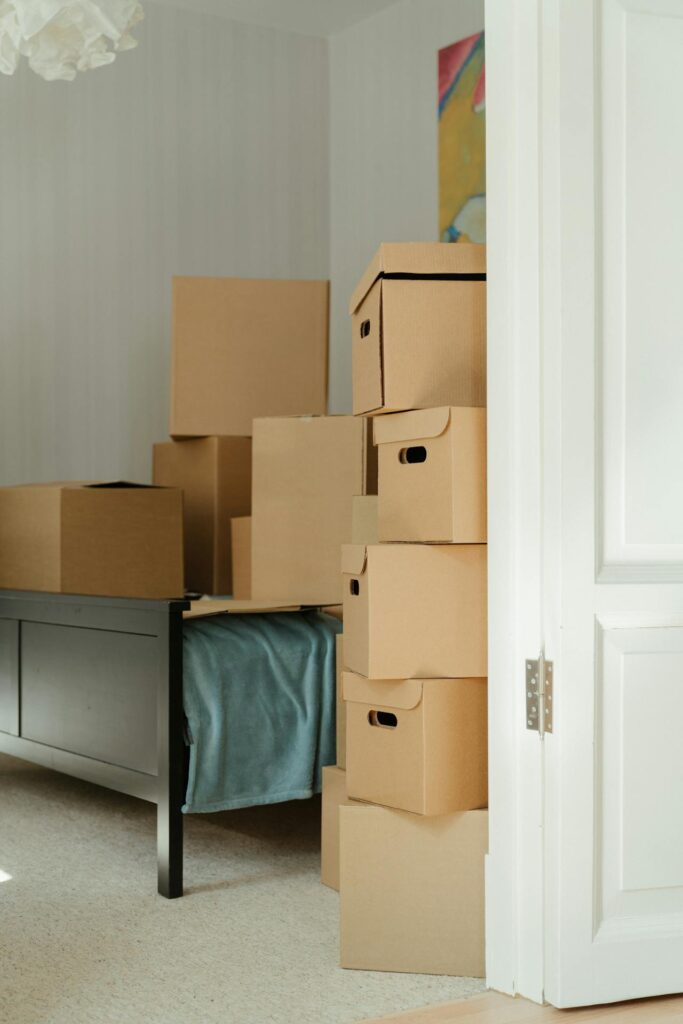
Speaking of hanging clothes, here’s a brilliant hack: group them on hangers, slip a bin bag or old pillowcase over the top, and tie at the bottom. They’ll stay clean and crease-free, and you can transfer them straight to your new wardrobe. For delicate items like jewellery, thread necklaces through straws to prevent tangling, and use egg cartons for earrings and small items.
The Bathroom Clear-Out
Bathrooms might be smaller, but they deserve careful attention. Start by checking expiration dates on everything – makeup, skincare, medications, and toiletries all have shelf lives, and moving house is the perfect time to clear out expired items.
For items you’re keeping, group similar things together and pack them strategically. Double-bag anything liquid or cream-based – a shampoo explosion mid-move is no fun. Keep prescription medications with you rather than packing them. Pack a separate box with immediate essentials: toothbrushes, toothpaste, deodorant, shower gel, shampoo, conditioner, toilet roll, hand soap, and any daily skincare items or medications. Include a shower curtain and towels if you’ll want them right away.
The Dreaded Loft
The loft requires a ruthless approach. Start by bringing everything down and sorting into clear categories. Old paperwork can usually be scanned or shredded. Christmas decorations might need culling – check lights work before packing them for another year.
Create a clear inventory of what you’re keeping. Label boxes with detailed contents rather than vague descriptions like ‘miscellaneous’. Consider whether temperature-sensitive items like photos or electronics should be stored differently in your new home, and finally, organise seasonal items together so they’re easier to access when the right month rolls round.
The Home Office
Home offices often hide masses of paperwork. Sort documents into essential categories: must-keep legal documents, necessary paperwork, and disposable items. Scan important documents – having digital backups is invaluable. Shred anything with personal information rather than just binning it.
Pack your office supplies methodically. Keep one set of basics accessible for the move itself – you’ll need pens, scissors, and tape until the last minute. Back up your computer and pack peripherals carefully, taking photos of connections just like with entertainment systems.
Getting Through Moving Day With Your Emotions In Tact
Your essential documents box should include: passports, driving licences, house paperwork, insurance documents, and any medical information. Keep valuable items and sentimental pieces with you rather than on the moving van.

Your personal essentials box needs: phone chargers, extension leads, basic tools (screwdriver, pliers), first aid supplies, painkillers, snacks, water bottles, toilet paper, hand soap, towel, and change of clothes. Don’t forget the kettle, mugs, and tea bags – a cup of tea makes everything more manageable.
Moving house isn’t anyone’s favourite activity, but breaking it down room by room makes it manageable. Take it steady, be organised, and remember – every box you pack is one step closer to being settled in your new home. The key is to start early, stay systematic, and keep essential items accessible until the last possible moment. It’s also ok to have a miscellaneous box just labelled as stuff.







